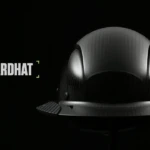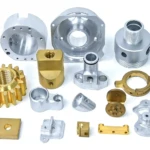The Evolution of 3D Printing Technology: Honda’s Innovative Approach to Additive Manufacturing
In today’s rapidly changing technological landscape, innovation is key to staying ahead of the curve. One company that has demonstrated a remarkable commitment to innovation is Honda, the renowned Japanese automaker. In a recent article, we took a closer look at Honda’s utilization of 3D printing technology, specifically their laser powder bed fusion (LPBF) process. In this blog post, we’ll delve deeper into Honda’s innovative approach to additive manufacturing, exploring the challenges they’ve overcome and the exciting opportunities that lie ahead.
LPBF: A Game-Changer in 3D Printing
LPBF is a metal 3D printing technology that allows for the rapid production of complex, unique parts. This process involves fusing together layers of metal powder using a laser, resulting in products that are not only precise but also remarkably strong. Honda’s use of LPBF has led to the creation of innovative parts, such as pistons and turbine housing areas, that are redefining the boundaries of what is possible in the world of 3D printing.
Challenges and Solutions: Optimizing LPBF Process
Despite the many benefits of LPBF, this technology is not without its challenges. One of the key issues is the sensitivity of the printing zone to external interference, which can cause problems with smoke and metal splashes. To overcome this hurdle, Honda’s research and development team developed a high-speed camera system that captures images of each layer, allowing them to optimize the process and eliminate defects. By closely monitoring their processes, Honda has been able to guarantee high-quality parts, ensuring that their 3D printed products meet the highest standards of excellence.
Test and Error: The Honda Approach to Innovation
Honda’s innovative approach to 3D printing is built on a foundation of test and error. By continuously monitoring the printing process, Honda’s team is able to fine-tune the process, making adjustments as needed to achieve the desired results. This test-driven approach has allowed Honda to push the boundaries of what is possible with LPBF, creating complex geometries and intricate designs that would be impossible to produce using traditional manufacturing techniques.
Formula 1 Racing: The Future of 3D Printing
One of the most exciting areas of application for Honda’s 3D printing technology is in the world of Formula 1 racing. With a focus on weight optimization and resistance, Honda has developed a range of innovative parts, including pistons and turbine housing areas, that are redefining the limits of what is possible in the world of 3D printing. By using LPBF, Honda is able to create lightweight, yet incredibly strong components that can withstand the intense pressures of Formula 1 racing.
Wheelchair Handlebars: A New Era in Personalized Design
In addition to their work in Formula 1 racing, Honda has also been utilizing 3D printing technology to create innovative wheelchair handlebars. By using topological optimization, Honda’s designers are able to create handlesbars that are both lightweight and incredibly strong, making them an ideal choice for athletes seeking to optimize their performance. This focus on personalized design is an exciting development in the world of 3D printing, as it allows for the creation of bespoke parts that are tailored to the specific needs of the individual.
The Future of 3D Printing: A Bright Horizon
As we look to the future, it’s clear that 3D printing is going to play an increasingly important role in shaping the world around us. With companies like Honda leading the charge, we can expect to see a proliferation of innovative applications across a range of industries. From Formula 1 racing to wheelchair handlebars, the possibilities are endless, and we can’t wait to see where the future takes us.
For more information on Honda’s innovative approach to 3D printing, be sure to check out their latest article on http://www.mohou.com/articles/article-12601.html. In the meantime, we’d love to hear from you. What do you think is the most exciting area of application for 3D printing technology? Share your thoughts in the comments below!
Conclusion
In conclusion, Honda’s innovative approach to 3D printing is a game-changer in the world of additive manufacturing. By pushing the boundaries of what is possible with LPBF, Honda is redefining the limits of what is achievable, from Formula 1 racing to wheelchair handlebars. As we look to the future, it’s clear that 3D printing is going to play an increasingly important role in shaping the world around us. With companies like Honda leading the charge, we can’t wait to see what the future holds.

















